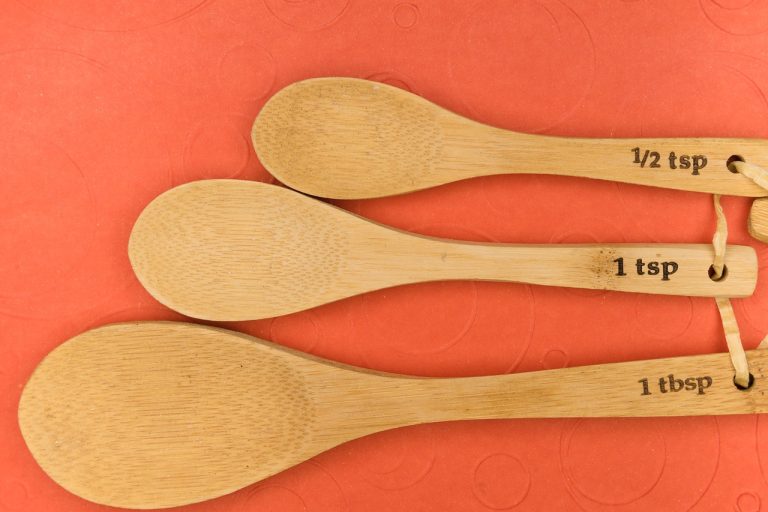Cooking can be a challenge when you don’t have kitchen scales, measuring cups, or spoons at hand. Still, many delicious meals around the world are made every day without precise tools. With some practice and attention, approximate measurements often work well—especially for everyday cooking where flexibility is allowed. From using ordinary cups and spoons to visual cues and hand measures, there are many traditional tricks to keep your cooking accurate enough.
Using Regular Cups and Glasses as Substitutes
Most households have mugs, glasses, or tea cups that can be used as makeshift measuring tools. For reference, a standard drinking glass usually holds around 250 ml (1 cup). If you ever need to convert cup to teaspoon, remember that 1 cup equals about 48 teaspoons.
- A medium-sized mug often equals 300–350 ml.
- A tea glass or small coffee cup may hold 100–150 ml.
Tip: Once you pick one cup or glass for a recipe, stick with it throughout to maintain consistency.
Using Tablespoons and Teaspoons
Not all spoons are created equal, but they can still serve as decent substitutes.
- A teaspoon ≈ 5 ml
- A tablespoon ≈ 15 ml
Household spoons are often a bit larger or smaller than standard measuring spoons, so try to keep portions level instead of heaping. For liquids, fill the spoon until just full; for dry ingredients, gently flatten the top with a knife or your finger.
Measuring Dry Ingredients Without Tools
Your hands can be surprisingly effective measuring instruments:
- A pinch (between thumb and two fingers) = about 1/8 teaspoon
- A palmful = roughly 1 tablespoon
- A handful = about ½ cup
Other useful tricks:
- Compare with everyday objects (e.g., a golf ball-sized portion of rice ≈ ½ cup).
- Scoop flour or sugar with a cup, then level it off with a knife or flat edge.
- For spices, use pinches or compare to coins for visual size references.
When in doubt, you can convert units of volume (like cups to tablespoons or teaspoons) to get a more precise idea of your approximations.
Measuring Liquid Ingredients Without Tools
If you don’t have a measuring jug, try these substitutes:
- Small containers like jar lids or bottle caps can act as “mini-cups.” For example, many plastic bottle caps hold about 5 ml.
- A tablespoon of liquid is roughly the same size as a large coin (like a quarter or 2-euro coin).
- Use cups, mugs, or bowls consistently, just as with dry ingredients.
Note: Thick liquids like honey, syrup, or oil behave differently—use spoons or smaller containers and scrape well to avoid underestimating.
Final Tips and Safety Notes
- Practice makes better. The more you cook this way, the more accurate you’ll get.
- Know when precision matters. Baking often requires exact measurements, while soups, stews, or sauces allow more flexibility.
- Season “to taste.” Trust your palate—add gradually and adjust as you go.
- Be consistent. Use the same spoons, cups, or glasses for an entire recipe to keep ratios balanced.
Conclusion
You don’t need fancy equipment to prepare tasty meals. With a bit of creativity and practice, you can measure ingredients using cups, spoons, hands, and even bottle caps. Cooking is about intuition as much as precision—so trust your senses, taste along the way, and don’t be afraid to adjust.
Optional tip: Over time, you can create your own “reference set” of spoons and cups that you know the size of, so you’ll always have reliable tools—even without official measuring equipment.
FAQ
- Can I really cook without measuring tools?
Yes! Many traditional cuisines rely on visual cues, hands, and spoons instead of precise tools. With practice, you’ll learn how much “a pinch” or “a handful” means in your own kitchen. - What if my recipe requires exact measurements?
For baking or delicate dishes, precision matters more. In that case, it’s best to borrow or invest in proper tools. But for soups, stews, and everyday meals, approximate measurements usually work fine. - Are regular spoons the same as measuring spoons?
Not exactly—household spoons can vary in size. A standard teaspoon is about 5 ml, and a tablespoon is about 15 ml. Use your spoons consistently throughout the recipe to stay balanced. - How can I avoid mistakes when guessing amounts?
Start small and adjust as you go. It’s easier to add more salt, sugar, or spice than to fix an overly strong flavor. Consistency with the same cups and spoons will also make your results more reliable.

